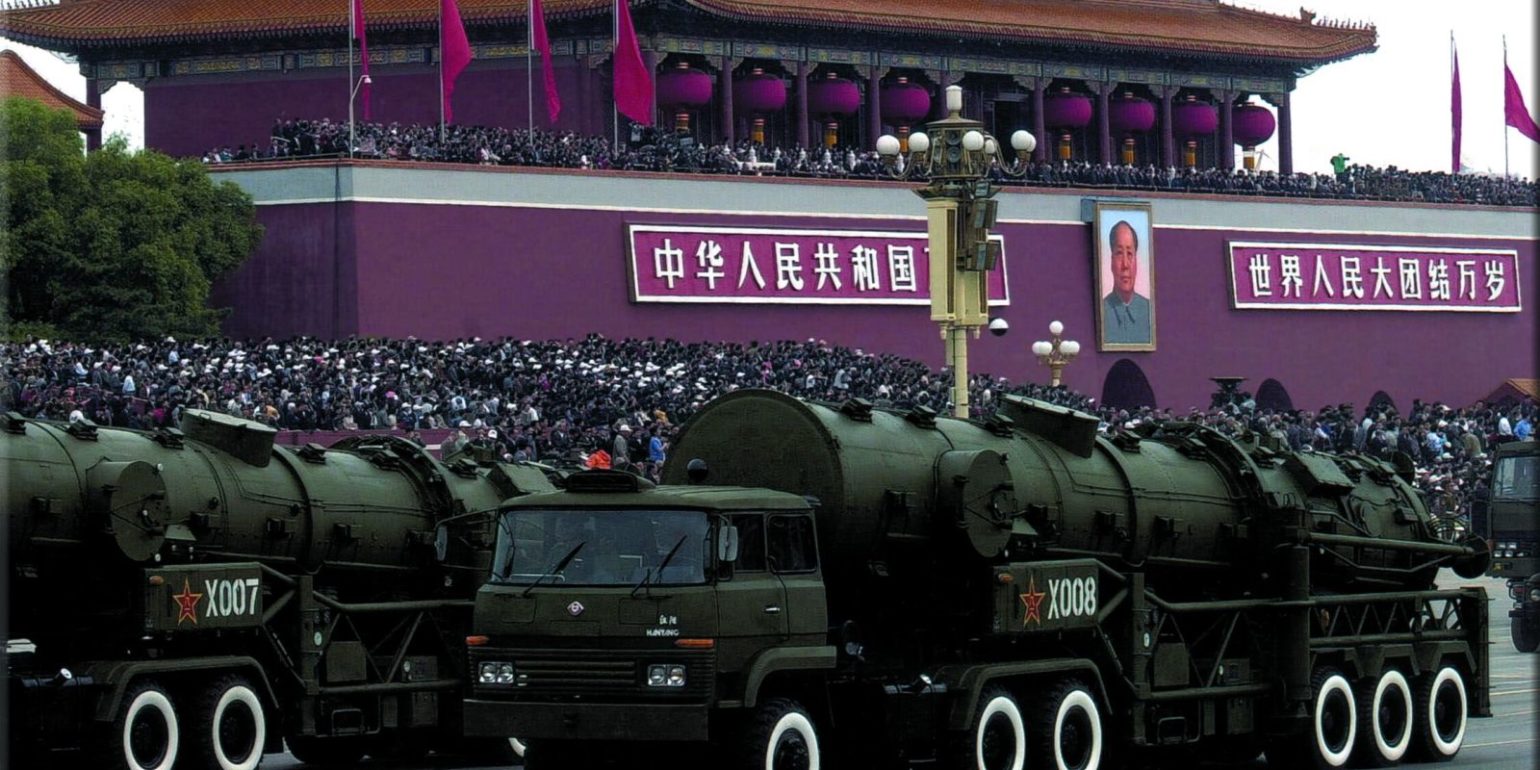Facts
| China/U.S. Designation | DF-21/CSS-5 |
| Missile Variants | DF-21A, DF-21B, DF-21C |
| Mobility and Role | Road mobile/Medium Range Ballistic Missile |
| Designer/Producer | People’s Republic of China |
| Range | 1,800km |
| Warhead Type and Weight | Nuclear or Conventional/600kg |
| MIRV and Yield | No MIRV capabilities/300kt |
| Guidance System/Accuracy | Inertial/700 CEP |
| Stages/Propellant | Multistage/Solid |
| IOC/Retirement | 1991/Still in service |
| Status/Number of Units | Operational/ N/A |
Overview
The Dong-Feng 21 is a road-mobile MRBM developed by the People’s Republic of China in 1991. The DF-21 is a two-stage, single-warhead, solid-propelled, missile that is deployed on a semi-trailer TEL with a maximum range of 1,800km.[i] Paired with inertial and terminal radar-guidance, the DF-21 can be fired rapidly with a launch-time of only several minutes. The missile is contained in an aluminum-alloy cylinder tube and is launched from a vertical position.[ii] The DF-21 has been improved into several variants such as the DF-21A, DF-21B, DF-21C, and one of China’s most recent innovations the DF-21D.
With a CEP of 30-100m, the DF-21A has an improved accuracy over the original model and is designed with both GPS and a radar-based terminal guidance system.[iii] Deemed operational in 1996, the DF-21A also has a modified nose section and it is suspected that it can be fitted with an electromagnetic pulse warhead.[iv] The DF-21B is identical to the DF-21A except for its enhanced guidance system which allows the missile to strike targets more accurately.[v]
The DF-21C is the modernized version of the DF-21A and DF-21B. An enhanced GPS guidance system and a CEP of 30-40m enables the DF-21C for precision-strike missions. The missile is launched from a horizontal position and the range is slightly shorter than the DF-21A and DF-21B in exchange for its larger payload of 2,000kg.[vi] Unlike the DF-21A and the DF-21B, the DF-21C is the first dual-capable version able to be fitted with nuclear as well as conventional weapons systems.[vii]
Strategic Implications
Conventionally-armed DF-21s will allow the PLA to engage in theater-range ballistic missile opening or escalating strikes meant to counteract an adversary’s invading forces and infrastructures. This would also allow China to perform long-range preemptive, opportunistic, or suppressive, strikes that can interfere with adversaries attempting to assemble for an operation.[viii] The PLA recently placed a considerable amount of pressure on India as several DF-21C launchers are being positioned in western China near Ka Aaidam and Delingha. The nuclear strike capabilities of the DF-21A and DF-21B act as an additional deterrent to other regional adversaries such as Japan, Korea, Russia, the Philippines, and Vietnam.[ix] The DF-21 and its variants have greatly strengthened China’s A2/AD capabilities.
Sources
[i] http://www.armyrecognition.com/china_chinese_army_missile_systems_vehicles/df-21_/_df-21a_css-5_/_df-21b_medium-range_road-mobile_ballistic_missile.html
[ii] http://www.deagel.com/Ballistic-Missiles/DF-21_a000859001.aspx
[iii] http://militaryedge.org/armaments/df-21/
[iv] https://missilethreat.csis.org/missile/df-21/
[v] https://fas.org/nuke/guide/china/theater/df-21.htm
[vi] http://www.armyrecognition.com/china_chinese_army_missile_systems_vehicles/df-21c_medium-range_road-mobile_ballistic_missile_-_df-21d_anti-ship_ballistic_missile.html
[vii] http://www.janes.com/article/58013/china-reveals-df-21-mrbm-manoeuvrable-warhead
[viii] http://www.nti.org/learn/countries/china/delivery-systems/
[ix] https://www.princeton.edu/sgs/publications/sgs/archive/151Li-Bin.pdf

